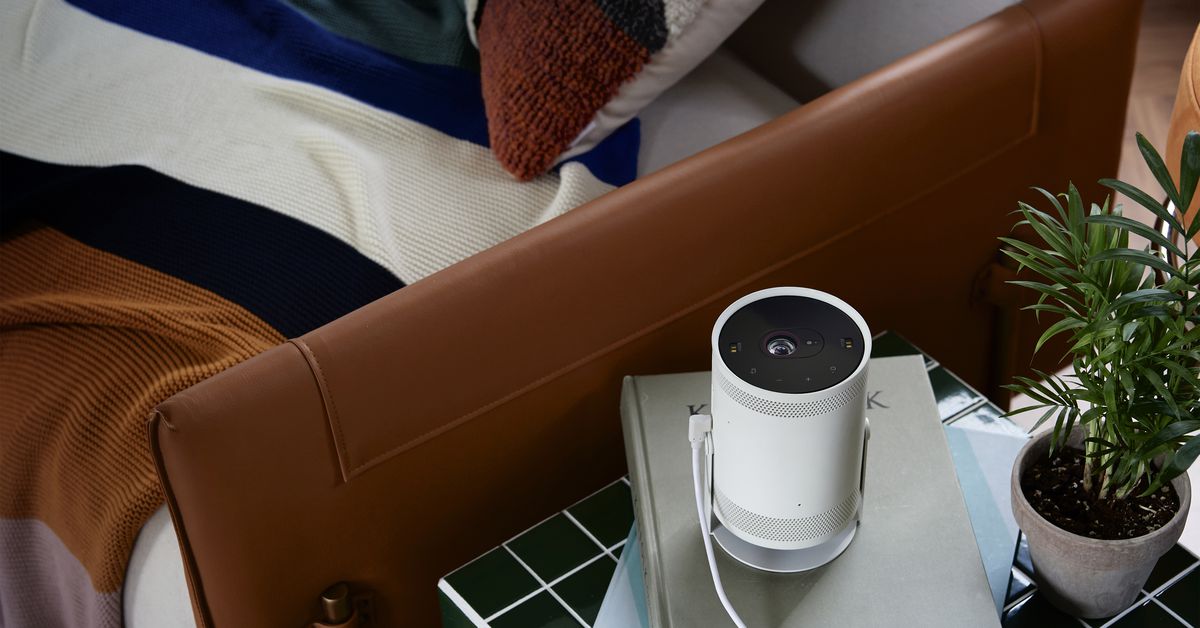Alienware 32 QD-OLED review: a showstopping monitor
When it comes to gaming, the Alienware 32 QD-OLED offers an unparalleled experience
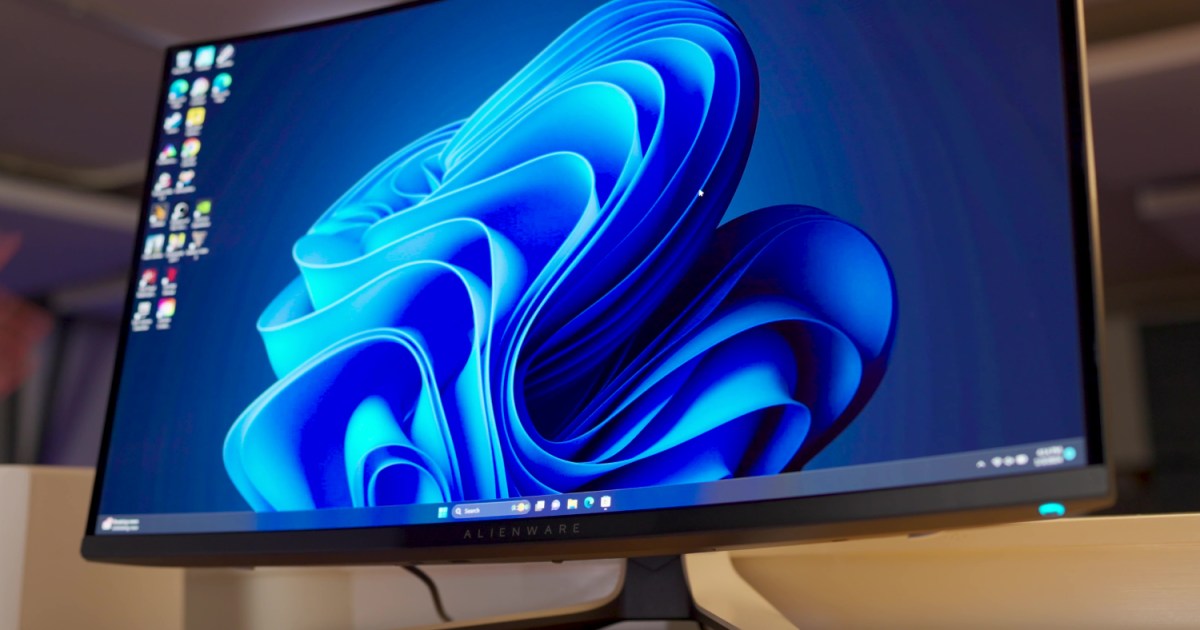
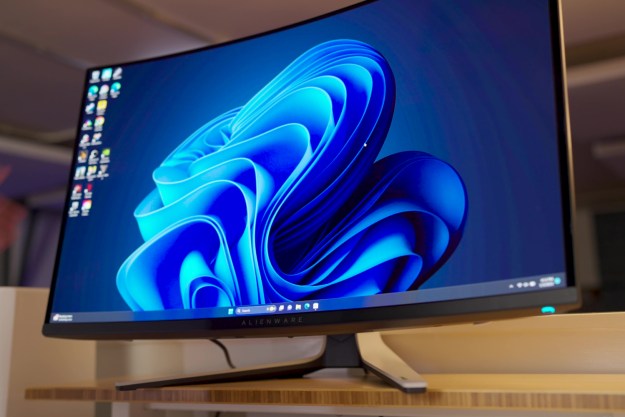
Alienware 32 QD-OLED
MSRP $1,200.00
Pros
Fantastic HDR gaming Incredible out-of-box color accuracy Excellent console monitor High resolution, fast refresh rate Three-year warranty is great Fairly affordableCons
Thick, plastic back No speakersAlienware earned itself quite a reputation a couple of years ago with its 34 QD-OLED.
But it had a strong hook on its side as the first really good OLED gaming monitor out there. That’s not true anymore, so the question is does the new Alienware monitor, the 32-inch 4K QD-OLED model (AW3225QF), give the crown back to Alienware.
And the answer is yes, for now. Absolutely.
Video review
Alienware 32 QD-OLED specs
| Alienware 32 QD-OLED (AW3225QF) | |
| Screen size | 32 inches |
| Panel type | QD-OLED |
| Resolution | 3820 x 2160 |
| Peak brightness | 1,000 nits (HDR), 250 nits (SDR) |
| HDR | DisplayHDR True Black 400 Dolby Vision |
| Aspect ratio | 16:9 |
| Contrast ratio | 1,000,000:1 |
| Response time | 0.03ms (GtG) |
| Refresh rate | 240Hz with Adaptive Sync, G-Sync compatible |
| Curve | 1700R |
| Speakers | N/A |
| Inputs | 1x DisplayPort 1.4 (4K at 240Hz), 2x HDMI 2.1 (eARC to support Dolby Atmos) |
| Ports | 3x USB-A 3.2 Gen 1, 1x USB-C 3.2 Gen 1 |
| List price | $1,200 |
Design
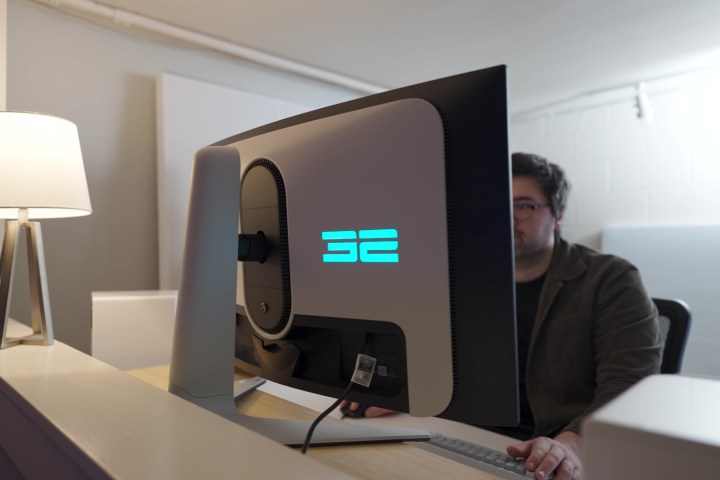 Zeke Jones / Digital Trends
Zeke Jones / Digital TrendsThe Alienware 32 QD-OLED is the first of its kind. There have been a few other 4K OLEDs out there, but they’ve all either been stuck at a 60Hz refresh rate or are massive 42-inch behemoths. Until now, we’ve never seen a 4K OLED monitor with a refresh rate of 240Hz, which the Alienware 32 QD-OLED hits. Newly announced monitors like the Samsung Odyssey G8 or HP Omen Transcend 32 match that, but haven’t launched just yet.
Now, 4K at 240Hz might sound a little ridiculous. And for the average gamer’s PC, yeah, it’s probably overkill, despite the fact that there have been a few 4K 240Hz gaming monitors out in the wild, such as the Samsung Odyssey Neo G8.
The curve isn’t a distraction at all.
But there’s room to grow here, and it’ll ensure that your system isn’t bottlenecked by the refresh rate in multiple rounds of GPU upgrades down the line. If your concern with the previous Alienware 34 was that it “only” had a refresh rate of 175Hz, then you should like this change. That faster refresh rate comes in handy for more competitive games when you might want to jump down to a lower resolution.
Of course, if you want to take that a step further, Alienware also now has a 27-inch QD-OLED model with a 360Hz refresh rate.
The Alienware 32 QD-OLED is not an ultrawide like the Alienware 34, and instead sticks with a conventional 16:9 aspect ratio. It does, however, come with a 1700R curve. For me, the curve was subtle enough to not feel awkward in this aspect ratio. This isn’t one of those 32-inch 1000R monitors that are a bit too aggressive with the curve. The 1700R suits the size of the monitor well, creating a bit more “immersion,” if you want to call it that. It’s not at all a distraction in the way that it could have been.
It’s worth noting, though, that both other monitors that use this same panel, the aforementioned Odyssey G8 and Omen Transcend 32, use a flat 32-inch panel without a curve.
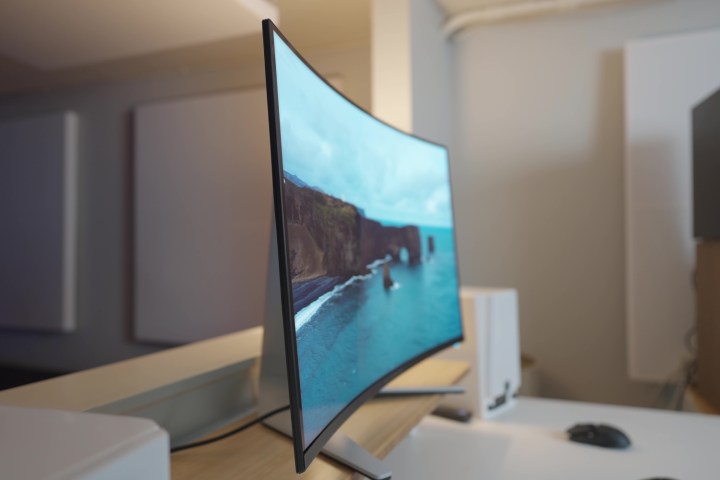 Zeke Jones / Digital Trends
Zeke Jones / Digital TrendsAside from the panel itself, everything else about the 32-inch model resembles the 34-inch one. So, the design and setup is all basically identical, including the base, the stand, and the lighting on the back.
It sports the familiar two-tone black-and-white exterior that Alienware has become known for. I do wish it was offered in all-black as well, but for now, that’s exclusive to the 27-inch model. The back chassis is still made out of plastic, which admittedly doesn’t feel great when you reach up to adjust the screen.
Speaking of adjustment, you do have over 4 inches of height adjustment and 40 degrees of tilt, which matches what you could do with the Alienware 34. You can’t go vertical, but there’s enough adjustment to find a comfortable position.
The Alienware 32 is missing a set of built-in speakers.
The Alienware 32 is also considerably thicker than some comparable monitors. When you set it up next to the new superthin metal used on the Samsung monitors, for example, you might come away thinking that the Alienware doesn’t feel as premium. Having seen the new Odyssey G6 and G8 in person myself, it’s undoubtedly true. Everyone will feel different about that, but I’m certainly partial to how those look over the Alienware.
The other thing missing from the Alienware 32 is a set of built-in speakers. In the past, gaming monitors have ignored speakers, but with Samsung and LG raising the bar in this department with recent releases, it becomes increasingly glaring that these Alienware monitors omit them entirely. It’s another complaint that most people will be able to look past, especially while gaming. But if you use it for work or the occasional video call, it’s handy to have a set of speakers onboard as a backup.
Ports and controls
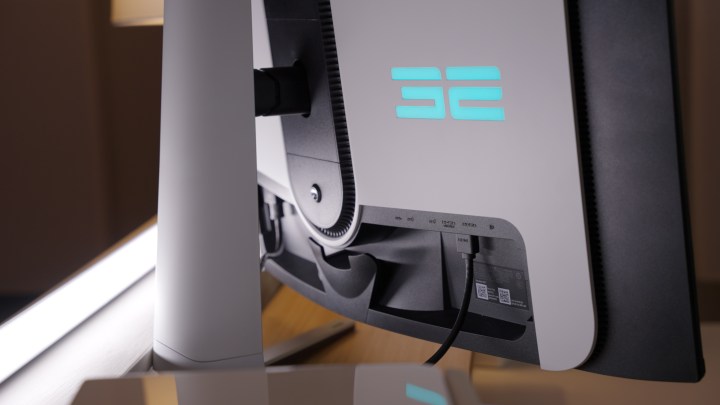 Zeke Jones / Digital Trends
Zeke Jones / Digital TrendsYou can access the on-screen display (OSD) on the Alienware 32 via the joystick that’s dead center under the screen. It’s easy to navigate through the menu and quickly get to things like Brightness, Contrast, or Inputs.
You’ll find other important settings here like the Smart HDR modes, Dark Stabilizer, OLED care options, different color modes, dedicated Console mode, Dolby Vision, and much more. Yes, you heard that right – the Alienware 32 is among the first gaming monitors to support Dolby Vision. That doesn’t do you much good with PC games, but it’s a great addition for console gaming.
Speaking of console support, the Alienware 32 QD-OLED does more on that front than almost any gaming monitor I can think of. First of all, it has the previously mentioned Console mode, which automates HDR tone mapping. And then, yes, it has Dolby Vision.
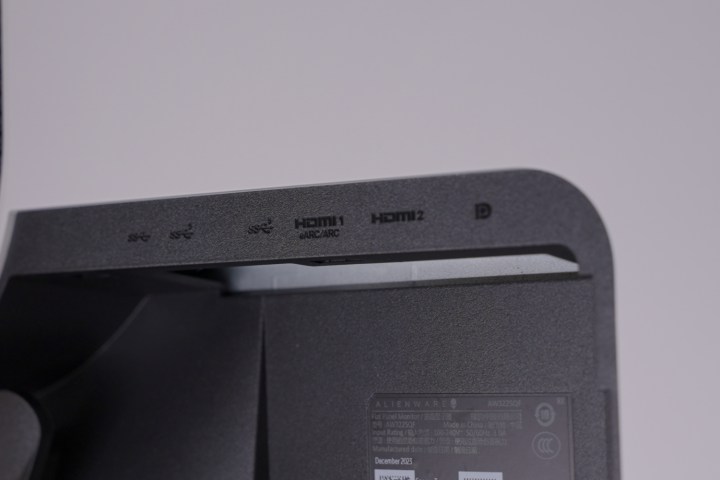 Zeke Jones / Digital Trends
Zeke Jones / Digital TrendsThe final pieces of the puzzle are the two HDMI 2.1 ports, which gets you VRR (variable refresh rate), as well as eARC. This is another first for the gaming monitor world, allowing you to connect right up to your Dolby Atmos sound system or soundbar. I don’t know that a ton of people will use this, but it makes the Alienware 32 a proper television replacement in almost every way.
In addition to the two HDMI 2.1 ports, you also get DisplayPort to get the full 120Hz 4K. It also has an assortment of USB ports, including an upstream type B port, three USB-A 3.2 Gen 1 ports, and one USB-C for power delivery.
The ports are all downward-firing on the back, hidden behind a removable cover. The cable management is good too, as cables can be run out the back and through the stand.
Image quality
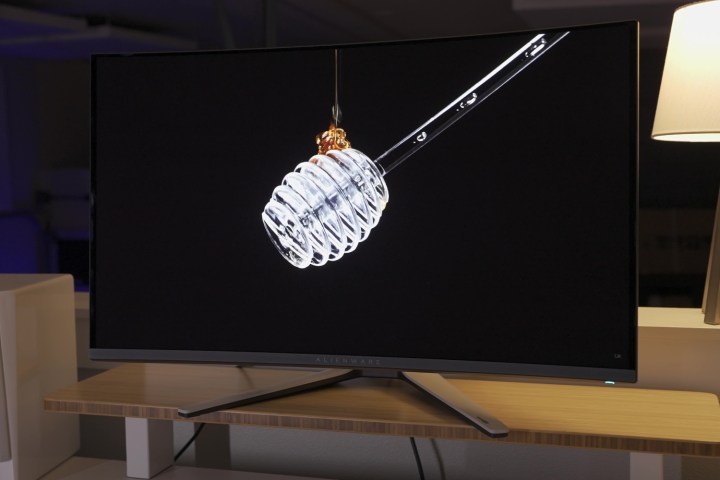 Zeke Jones / Digital Trends
Zeke Jones / Digital TrendsThe QD-OLED here is the star of the show, of course. But this isn’t 2022 – there are plenty of great OLED monitors out there these days, and Samsung Display’s QD-OLED panels are only some of the options. Fortunately, the Alienware 32 isn’t just in a new size and aspect ratio – it actually improves image quality.
If there’s one thing the Alienware 34 struggled with, it was color accuracy. It’s not that it was bad, but it was sort of middle of the road for a high-end display, rather than exceptional in the way that monitor was in pretty much every other aspect.
It’s the most color accurate monitor out of the box we’ve ever tested.
This new crop of QD-OLED monitors really fixes that in a big way. Those overblown greens and reds are no more – in fact, I measured an average color error of just 0.56. That makes it, along with the 27-inch model, the most color accurate monitor we’ve ever tested. That includes the testing we’ve done on laptops and MacBooks too. And just as a reminder, that’s out-of-the-box color performance before calibration, which is really kind of amazing. This isn’t a high-end television with all its own processing happening in the display itself. Seriously, that’s impressive.
The good aspects are all the same. It’s still OLED, you still get the perfect black levels, you still get the same brightness. I measured 1,033 nits for a 1% window or 830 nits for a 4% window — and that’s important because color accuracy does still drop significantly at those higher brightness levels. But the combination of those black levels and the 1000-nit peak brightness makes for some really gorgeous HDR performance, which is certified by VESA as DisplayHDR True Black 400. It still has excellent color saturation, covering 100% of sRGB, 97% of DCI-P3, and 94% of AdobeRGB color spaces.
 Zeke Jones / Digital Trends
Zeke Jones / Digital TrendsIt still isn’t super bright in SDR, though. It still only gets 260 nits of brightness with HDR turned off, which I measured the highest in the Creator color preset. I do still wish it were a little brighter without HDR, especially compared to just about any high-end laptop, which sometimes can have up to twice this much brightness.
In an office setting with some bright overhead lights on, I found myself often keeping HDR on (which Windows 11 manages fairly well) while using this monitor at full brightness – but that’s me, I like to sear my eyeballs with brightness while working. A lot of people both work and game from home in darker environments, and for them, 250 nits is plenty.
Really, the only thing the Alienware 32 is lacking, especially as a 4K panel, is what these new LG OLED panels have, which is the ability to switch to a lower-resolution, higher refresh rate mode. LG panels offer a 1080p 480Hz mode, which is pretty incredible, and completely eliminates the choice between monitors with higher resolutions and higher refresh rates. I’m not gonna mark down the Alienware 32 for not having this of course, but I thought it was worth mentioning as something some OLED makers are doing to sweeten the deal even more.
Gaming experience
 Zeke Jones / Digital Trends
Zeke Jones / Digital TrendsWhen it comes to gaming, it’s an unparalleled experience. The combination of the excellent HDR performance, the superfast 240Hz refresh rate, the sharpness of 4K, and the response times of OLED makes for a complete package.
It’s hard not to get sucked into whatever game you’re playing on a display like this. I should note that although the Alienware 32 doesn’t technically have certification for FreeSync Premium Pro or G-Sync Ultimate, it does have variable refresh rate, which is really all that matters when it comes to avoiding screen tearing.
The fact that playing on a console is as easy as on a PC is a huge benefit too. This is a monitor that was clearly crafted to be a console-friendly display. In addition to the aforementioned ports and Dolby Vision support, the standard aspect ratio is guaranteed to be supported by all console games. That sounds like a freebie, but it certainly sets this model apart from the Alienware 34.
I know this doesn’t apply to everyone by any means, but if you do happen to be a hybrid gamer, and you love the idea of using both a console and a PC interchangeably with a monitor, I can’t think of a better solution. This really is as good as it gets.
It’s another winner
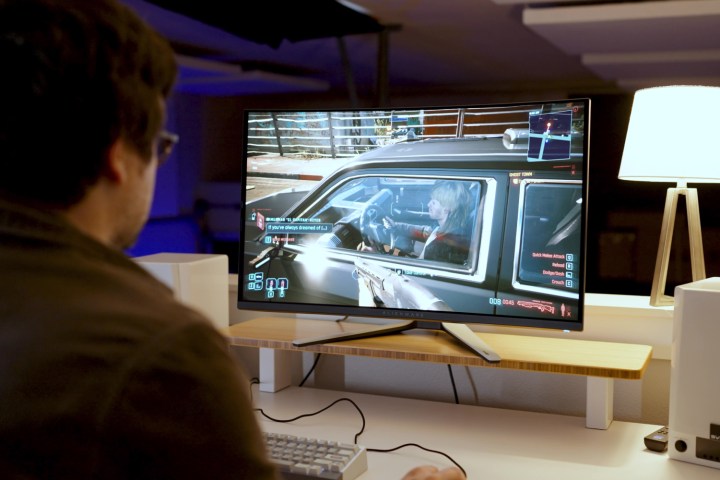 Zeke Jones / Digital Trends
Zeke Jones / Digital TrendsAlienware now has three QD-OLED options, and they’re all great. The Alienware 32 is the most expensive of the three, coming in at $1,200, and it’s also the most high-end since it’s 4K. But it’s actually cheaper than the Odyssey Neo G8 — and is the same retail price as the Alienware 34 when it originally launched.
The Alienware 34 QD-OLED will always have its place, especially because it’s now cheaper. And besides, people love ultrawide monitors these days. But I really do think the Alienware 32 takes things a step further, especially in terms of the faster refresh rate, higher resolution, improved color accuracy, and better console support.
Alienware won’t be the only company with these second-gen QD-OLED monitors, a few of which announced this week, such as the Samsung Odyssey G8 and HP Omen Transcend 32. We don’t yet know how these other monitors will directly compare to the Alienware 32, especially in terms of color accuracy — nor do we know when you’ll actually be able to buy them. They both look great in their own way, but as for now, the Alienware monitors are the only currently available to purchase.
The other thing that sets these Alienware monitors apart is the fantastic three-year warranty, especially on OLED burn-in. So, set aside concerns about burn-in and enjoy the fantastic joys of these OLED gaming monitors – of which the Alienware 32 QD-OLED is among the very best.

 Troov
Troov 







